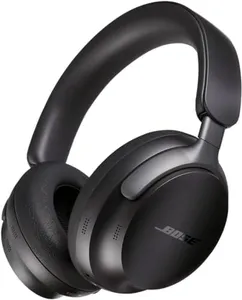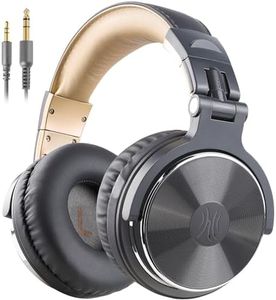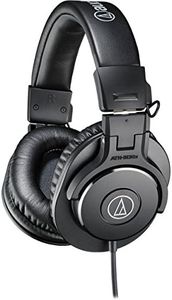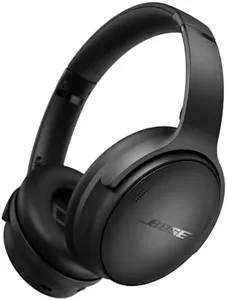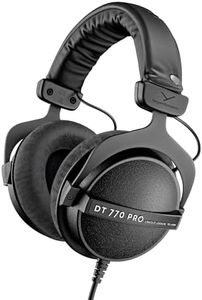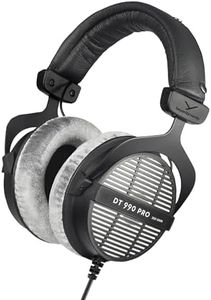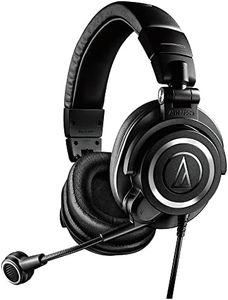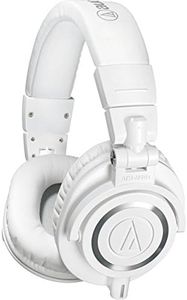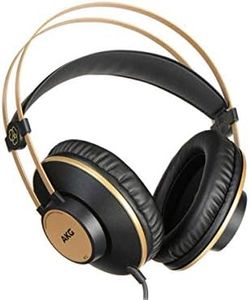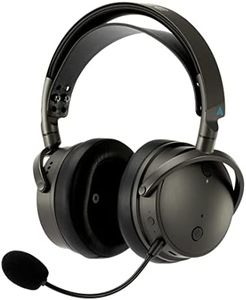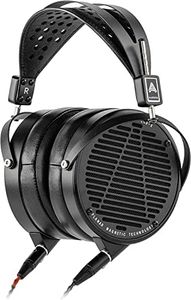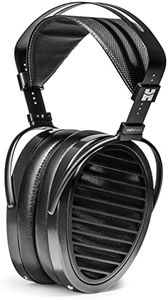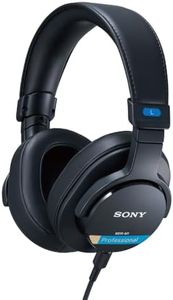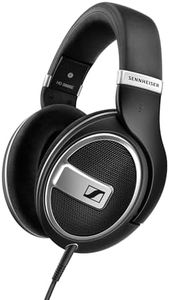We Use CookiesWe use cookies to enhance the security, performance,
functionality and for analytical and promotional activities. By continuing to browse this site you
are agreeing to our privacy policy
10 Best Studio Headphones
From leading brands and best sellers available on the web.By clicking on a link to a third party's website, log data is shared with that third party.
Buying Guide for the Best Studio Headphones
When choosing studio headphones, it's important to focus on accuracy and comfort. Studio headphones are different from regular music headphones because they are designed to let you hear sounds exactly as they were recorded, without boosting the bass or treble. This accuracy helps you make better mixes or edits, whether you're working on music, podcasts, or video projects. To find the right pair, you'll need to think about how you plan to use them and what kind of sound you want to hear. Understanding the main features will help you select headphones that fit your needs and work style.Sound Signature (Neutrality)Sound signature refers to how headphones reproduce different frequencies like bass, midrange, and treble. For studio work, a neutral or flat sound signature is important because it lets you hear your audio without any color or enhancement. Some headphones may boost the bass or brighten the highs, but that can lead you to make mixing decisions that don't translate well to other speakers. Beginners should look for headphones labeled as 'flat' or 'neutral.' If you mostly enjoy listening to music rather than creating it, then a warmer sound signature might be okay, but for editing and mixing, neutrality is key.
Driver Type and SizeDrivers are the components inside headphones that create sound. The size and type can affect the clarity and detail you hear. Larger drivers (like 40mm or 50mm) often produce deeper bass and more volume, while smaller drivers might be lighter and more comfortable for long sessions. Some drivers, like planar magnetic or electrostatic, offer very detailed sound, but dynamic drivers are most common and balance quality, comfort, and reliability. For studio use, focus more on the overall sound accuracy rather than just the biggest driver size.
Open-Back vs. Closed-Back DesignOpen-back headphones have perforated ear cups that allow air and sound to pass through, creating a more natural and spacious sound. They are great for mixing or critical listening in quiet rooms because they sound more realistic, but they also let sound leak out and in. Closed-back headphones, on the other hand, have sealed ear cups that block outside noise and keep your audio private. These are better for recording vocals or when you need isolation from surrounding noise. Think about where you’ll use your headphones most—quiet studio or noisy environment—to decide which design suits you best.
Comfort and Build QualitySince you'll likely wear your studio headphones for long periods, comfort is very important. Look for adjustable headbands, soft earpads, and a lightweight design. Some people prefer velour pads for breathability, while others like leather or memory foam for snugness. Build quality matters too—metal parts last longer than plastic and robust hinges prevent breakage. Try headphones on if you can, or check for reviews that discuss comfort over multi-hour sessions.
Impedance and SensitivityImpedance (measured in ohms) affects how much power headphones need to play at a good volume. Low impedance (under 50 ohms) works well with phones or laptops, while high impedance (over 100 ohms) may need a headphone amplifier to sound their best. Sensitivity tells you how loud the headphones will be at a given power level. If you are using studio gear with lots of power, higher impedance can provide cleaner sound. For portable use, stick to lower impedance. Pick the specification that fits the equipment you plan to use most.
Cable Type and ConnectivityStudio headphones often use detachable cables for easy replacement if damaged, and may come with both straight and coiled cables for different studio setups. Coiled cables add flexibility and are less likely to get tangled, while straight cables are lighter and offer more freedom of movement. Check if the headphones use standard connectors like 1/4-inch or 3.5mm, and ensure compatibility with your audio interfaces. Choosing the right cable type depends on your workspace setup and how mobile you need to be.
